
- This event has passed.
3rd International Conference for Glycoprotein Storage Diseases 2012
July 28, 2012 @ 8:00 am - July 29, 2012 @ 5:00 pm

ISMRD’s penguin family again migrated from around the world to attend the 3rd International conference for Glycoprotein Storage Diseases held in Charleston, South Carolina USA. The meeting was jointly hosted by ISMRD and the Greenwood Genetic Center (GGC).
Natural History clinics for 30 patients were also held at GGC’s Charleston office on July 27th and 30th.
We would not have been able to present this meeting without the very generous support of the National Institute of Neurological Disorders and Stroke, The Everylife Foundation, Mercy Medical Airlift, Zymenex, Rock4Dakatah, Genzyme and Ultragenyx.
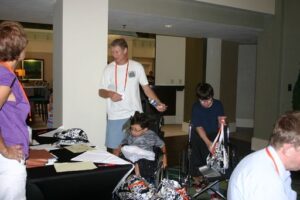

Welcome Reception
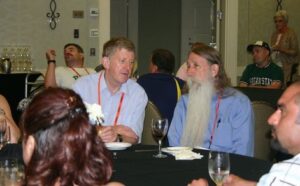
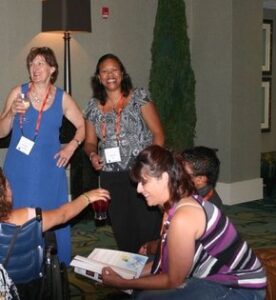
The welcome reception was full of excitement as old friends gathered together and new friends met for the first time.
Saturday
The morning sessions were a combined Scientific/Family meeting with Richard Steet opening the meeting with a presentation on an Overview of Glycoproteinoses followed by Emil Kakkis who spoke about Effective treatments for rare diseases – How do we get there.
After lunch the meeting split in two with the families moving onto their program that looked at the pathway to treatments, understanding neurological symptoms and signs. There were topics looking at dental care, eye issues, exercise for individuals with disabilities and two families gave their experiences of Bone Marrow transplant and Dental care in ML II.
To see the full conference program and abstracts click here.
A Memorial Service was held in loving memory of all those who have lost their lives to one of these diseases. The service was followed by the balloon release. All eyes were glued to the sky until the very last balloon was out of sight. The presence of so many professionals, caregivers, friends, families and their children to honor those gone before us was amazing, a very touching end to the first day.
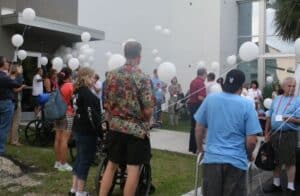
Life Time Achievement Award
Life time awards are not something that are given out lightly – rather they are recognition of the dedication we see in those that we regard as special because they have given their life and talents to trying to seek a cure for these rare and debilitating diseases.
ISMRD was very proud to present its very first Life Time Award to Dr Jules Leroy for his dedication to Mucolipidosis through-out his whole working life.
Jenny Noble New Zealand, Sylvia Webb Australia and Nila Coley USA all spoke of his dedication, his love and the time he so willingly gives to families over the years.
Dr Leroy being a very humble man thanked ISMRD for the award and dedicated the award to those that have challenged him through out his working life, and to the families who very generously allowed him to meet and spend time with their children.
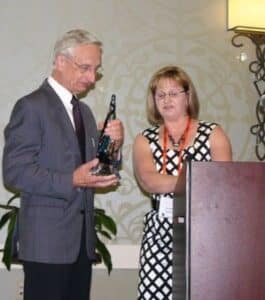
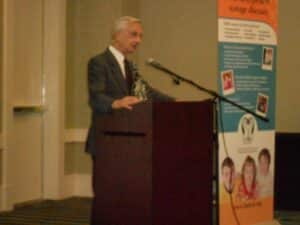
Sunday
The family program for Sunday was full of interesting topics such as, managing seizures, feeding and nutrition issues for those affected with a genetic disorder.
There was an interesting presentation on Palliative care. The presentation talked about how pediatric palliative care has forged new frontiers by recognizing that early referral and extended care by an integrated palliative care team can enhance the quality of life for children and their families when a cure is not possible. It also looked at the burdens placed on those caring for the affected patient.
Another interesting topic was Transition from from Pediatrics to adult health services and transition into the community. This presentation talked about how important it was to build a team of health professionals and community support people around the affected person so that the transition is smooth and does not cause undue stress to the family and affected person.
Lucia Horowitz talked about psychological testing and went on to explain what it all means and the how this kind of testing is useful when making important life decisions.
The meeting closed at 11.30 with the families joining the scientific meeting for final discussions.
Mark Stark President of ISMRD presented ISMRD’s future plans for supporting research and Jackie James Board member talked about how important it was for ISMRD to have support from families to raise funds so that we can support research met our administrative costs and host conferences as examples of where ISMRD needs funding support.
The meeting closed with a shared lunch.
Scientific Conference
Report for the International conference for Glycoprotein Storage Diseases – Charleston, South Carolina, USA 28th-29th July 2012 by Dr Sara Cathey
The Third International Workshop on Glycoproteinoses was held July 28 and 29, 2012 at the Crowne Plaza Hotel in N. Charleston, South Carolina. Concurrent scientific and family sessions were held during this two day meeting co-hosted by the Greenwood Genetic Center and ISMRD, the International Advocate for Glycoprotein Storage Diseases. The primary goal of the scientific meeting was to bring together rare disease experts from various disciplines. This was accomplished, and the conference achieved an unprecedented level of scientific expertise focused on the glycoproteinoses. Dr. Richard Steet (Biochemistry and Molecular Biology, University of Georgia Complex Carbohydrate Research Center) set the bar for excellence, launching the conference with his presentation “Overview of glycoproteinoses, old and new questions – looking to contemporary research for answers”. Dr. Steet described the complex cellular and molecular pathogenesis of the glycoprotein disorders, challenging us to broaden our view of these diseases. We need to focus not only on intracellular lysosomal storage but also on critical secondary effects in the extracellular matrix arising from inflammatory cascades, oxidative stress, altered calcium homeostasis, and autophagy. Dr. Emil Kakkis (EveryLife Foundation for Rare Diseases) gave an eye-opening presentation about regulatory processes and the hurdles that must be overcome for rare disease therapies to reach the marketplace. Mark Haskins (Center for Comparative Medical Genetics, University of Pennsylvania School of Veterinary Medicine) presented the latest developments from his area of expertise, therapy for human genetic diseases in large animal models. These first three talks built the framework for many discussions, all with the ultimate goal of answering this question: How can we treat these diseases?
Pathogenesis of the glycoproteinoses and the implications for therapeutic interventions were further explored by eminent scientists. Stuart Kornfeld (Washington University School of Medicine) explored mannose 6-phosphate dependent trafficking from the molecular level of the critical phosphotransferase enzyme. Roberto Zoncu (Postdoctoral Fellow in the laboratory of David Sabatini, Whitehead Institute for Biomedical Research) discussed the lysosome as a key organelle for metabolism and presented his research of the mTOR complex 1 protein kinase, a master growth regulator activated by amino acid signals from within the lysosomal lumen. Peter Lobel (Center for Advanced Biotechnology and Medicine, Rutgers University) discussed lysosomal proteomics, explaining both the “disease to protein” and “protein to disease” approaches for disease discovery and development of protein-based therapeutics. William Sly (Endowed Chair in Biochemistry and Molecular Biology Saint Louis University) presented the topic of targeted therapeutic proteins. He discussed glutathione receptor targeted liposomes to deliver drug to the brain and maintain the neuroprotective function of the blood-brain-barrier. David Bedwell (University of Alabama at Birmingham) presented nonsense suppression therapy.
Jon Davids (Shriners Hospital for Sick Children, Sacramento) talked about the skeletal manifestations of the glycoproteinoses and set the stage for two talks exploring the bone disease of mucolipidosis II and III. From the patient bedside perspective, Jules Leroy (Former Professor and Chairman of Pediatrics Ghent University, Belgium) covered prenatal, early and late skeletal features of ML. From the laboratory bench perspective, Dr. Steet discussed the role of excess cathepsin K in cartilage defects in a zebrafish model of ML II.
Troy Lund (Pediatric Hematology, Oncology and BMT, University of Minnesota) presented a comprehensive overview of hematopoietic cell transplant in the glycoproteinoses. Rosanne Taylor and Jessica Fletcher presented the pathophysiology of fucosidosis and enzyme infusion therapy in canine fucosidosis. Dr. Taylor’s work on fucosidosis dogs led to the first bone marrow transplant for human fucosidosis. Alessandra d’Azzo, (St. Jude’s Children’s Research Hospital) presented the status of gene therapy for galactosialidosis and the post-doctoral fellow from her lab, Shai White-Gilbertson, discussed the role of neuraminidase 1 in lysosomal exocytosis and disease pathogenesis. Line Borgwardt (Copenhagen University Hospital, Denmark) presented the early results of European trials of enzyme replacement for alpha-mannosidosis. Miao He and Ali Pervaiz from Emory University discussed high resolution urinary oligosaccharide analysis by MALDI-TOF mass spectrometry and the use of this testing in the diagnosis of aspartylglucosaminuria in one of their patients. Tim Wood (Biochemical Genetics Laboratory at Greenwood Genetic Center) explored the very rare disorder known as Schindler disease and the unique properties of alpha-N-acetylgalactosaminidase (NAGA enzyme).
All presenters and attendees benefited from the thoughtful discussions and questions inspired by the conference. Prior to closure of the conference, the timing of the next International Workshop on Glycoproteinoses was discussed with the entire group. The expectation is that a similar meeting will be useful and necessary within three years.
Third International Workshop on Glycoproteinoses Speaker List
David Bedwell, Ph.D. – University of Alabama at Birmingham, Birmingham, Alabama
Line Borgwardt, M.D. – Copenhagen University Hospital, Denmark
Nila Coley – Cedartown, Georgia
Alessandra d’Azzo, Ph.D. – St. Jude Children’s Research Hospital, Memphis, Tennessee
Ron R. Davids, M.D. – Shriners Hospitals for Sick Children, Sacramento, California
Jessica Fletcher – The University of Sydney, Australia
Mark Haskin, V.M.D., Ph.D. – University of Pennsylvania, Philadelphia, Pennsylvania
Miao He, Ph.D. – Emory University School of Medicine, Decatur, Georgia
Lucia Horowitz, Ph.D. – Greenwood Genetic Center, Greenwood, South Carolina
Emil Kakkis, M.D., Ph.D. – Every Life Foundation for Rare Diseases, Novato, California
Stuart Kornfeld, M.D. – Washington University School of Medicine, St. Louis, Missouri
Dawn Jacob Laney, MS, CCRC – Emory University School of Medicine, Decatur, Georgia
Jules Leroy, M.D., Ph.D. – Greenwood Genetic Center, Visiting Senior Scholar from Belgium
Peter Lobel, Ph.D. – Rutgers University, Piscataway, New Jersey
Troy Lund, Ph.D., M.D. – University of Minnesota, Minneapolis, Minnesota
Marc C. Patterson, M.D. – Mayo Clinic, Rochester, Minnesota
Muhammad Pervaiz, M.D. – Emory University School of Medicine, Decatur, Georgia
Joseph B. Ryan, Ph.D. – Clemson University, Clemson, South Carolina
Carlos F. Salinas, D.M.D. – Medical University of South Carolina, Charleston, South Carolina
Ida Vanessa Doederlein Schwartz, M.D. Ph.D. – Federal University of Rio Grande do Sul, Brazil
William Sly, M.D. – Saint Louis University School of Medicine, St. Louis, Missouri
Richard Steet, M.D. – University of Georgia, Athens, Georgia
David M. Steinhorn M.D. – Ann and Robert H. Lurie Children’s Hospital, Chicago, Illinois
Ronald Teed, M.D. – Children’s Eye Specialists, Charleston, South Carolina
Rosanne Taylor, Ph.D. – The University of Sydney, Australia
Melinda Whetsell, MS, RD, LD – Greenwood Genetic Center, N. Charleston, South Carolina
Shai White-Gilbertson, Ph.D. – St. Jude’s Children’s Research Hospital, Memphis, Tennessee
Tim Wood, Ph.D. – Greenwood Genetic Center, Greenwood, South Carolina
Roberto Zoncu, Ph.D. – Whitehead Institute, Cambridge, Massachusetts
Children and Youth Program

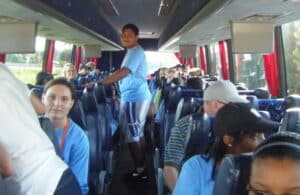
On Saturday the activities got under way early! By 8.30am our young men and women had gathered in front of the hotel, awaiting the charter bus that would take them to the South Carolina Aquarium.
A short ride brought us to the Aquarium, which sits right on Charleston’s harbor. We split into two groups and the fun began. The 4D movie experience took us to the Arctic from the view of the sea life. We were misted with water, “things slithered around our legs’ and punched our seat backs, and there was even a bit of a stinky fish smell!
Afterwards, we were given a tour of the Turtle Hospital, which has almost a dozen ‘patients’ in small rehab tanks. The whole group then toured the Aquarium proper; fish, reptiles, amphibians, and birds!
One of the major highlights of the day was the classroom time. The wonderful Aquarium staff brought out turtles, lizards, snakes and even a small alligator for everyone to see and touch.
By mid day stomachs were grumbling so it was time to stop and have a great deli lunch (some even ate two!!).
The day wasn’t over as we headed to the Children’s Museum for a short visit. Most of the group enjoyed the hands-on experience there, while others were happy to sit and socialize with each other.
Soon it was time to return to the hotel. With Kevin, Carl and the driver Mike handling the loading/unloading duties, the tired but happy group was soon back at the hoteleager to tell their families about their exciting day’s experience.
We mustn’t forget all the wonderful volunteers who came to support our children and adults during their activities. Without this very generous support we would not have been able to provide such an exciting program. Thank you everyone who assisted us.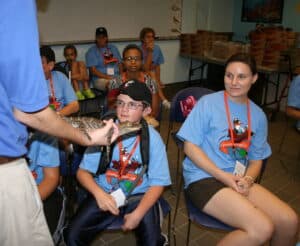
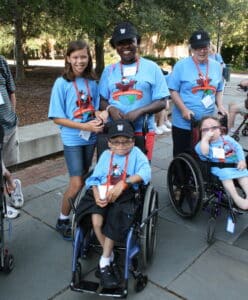
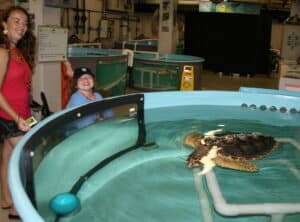
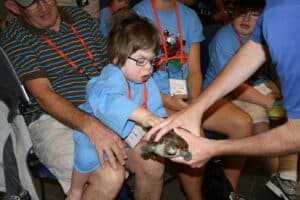
Personal Reflections
Three days before the conference I felt an emotional Tsunami engulfing me (by Trish Adkins, Mucolipidosis II Parent- USA)
My son Jamie was diagnosed with I-Cell disease in 1975 and gained his wings May 22, 1977. I have lived in a cocoon ever since. Having tried twice to join support groups for grieving parents, I never made it past the first meeting. I have never met or spoken with, much less interacted with, a family who had a child with Mucolipidosis until I found the I-Cell and ISMRD groups through Facebook. When I read of the ISMRD conference in South Carolina, I quickly booked my room and registered months in advance to attend. Three days before the conference I felt an emotional Tsunami engulfing me, so I considered cancelling my trip. However, having committed to Jenny Noble to photograph the conference, I knew deep down that backing out was not an option; attending this conference was about more than me. Two days before the conference began, I checked in and skirted the motel avoiding those I recognized from pictures I’d seen on the ISMRD Web and Facebook pages. The night before the ISMRD board’s luncheon, which I had been invited to attend, a picture was posted on the ISMRD Facebook page. There they were, everyone I had seen but not spoken to, sitting in the motel restaurant having dinner. I knew it was now or never. I picked up my camera, headed downstairs, walked up to the table, and took my first photo. With one click of the shutter I began the most incredible four days of my life.
Families and speakers registered Friday night and the excitement began as old friends reunited and new friends met. The enthusiasm continued Saturday morning as most of the children were paired with a Buddy and loaded onto a bus headed out for a day of adventure at the Aquarium and Children’s Museum.
As the buses pulled away, the sessions began. Everyone in attendance — professionals, parents, family members and friends — had one objective: to share and gather as much information as possible about Glycoprotein Storage Diseases. Between the Scientific and the Family Programs, over thirty topics were presented covering a broad range of subjects. During the breaks one could feel the synergy as conversations continued. Doctors and other researchers made themselves available to converse with all, especially parents.
The Memorial Service followed by the balloon release was a loving remembrance of the children who have gained their wings. Eyes were glued to the sky until the very last balloon was out of sight. The turnout was amazing. The presence of so many professionals, caregivers, friends, families and their children cannot be put into words for those of us who no longer have children with us.
For me the highlight of the conference came after the conference was officially over. I was sitting alone in a remote corner when Dr. Jules Leroy, known for being the first to describe the more severe form of Mucolipidosis and naming it I-Cell disease, approached and asked if he could join me. For the next ninety minutes we shared life experiences and laughs with most of our conversation revolving around Mucolipidosis. Taking as much time as I needed, he answered my questions in layman terms and explained the broad range of differences and similarities of ML II, MLII/III and MLIII. As he told me of other children, it was if they were his own, “one child from Spain”, “another child from Japan.” He seemed disconcerted that my son was one of the first to be diagnosed with I-cell but that his medical information (as far as he could remember) had not been forwarded to him. Emphasizing over and over the importance of family studies and data collection, he was genuinely interested in all aspects of my child’s life, from birth weight to our skin grafts to everything in-between giving me a list of medical information he would find useful to add to his data collection. There I sat thirty-five years after my son’s death and his life mattered.
On the way to the conference I had wondered – would I have put myself and my child through the family history study where he would have been poked and prodded, stuck with needles, and forced to be examined by numerous professionals? Could I have withstood the endless questions about my child and his limited abilities? Was it possible for me to endure four days with families I had never met and do more than shed tears? Would I be able to understand any of the topics being discussed?With every picture I took, session I attended, person I met, balloon I released, and tear I shed, I slowly began to break through the cocoon I had been in for thirty plus years. I have emerged as someone who not only believes in the importance of Family History Study and medical/family conferences, but also as one who wants to do my part in assisting the medical field to find a cure for all Glycoprotein Storage Diseases.
Thank you ISMRD (by Adian Trestianu Mucolipidosis II Parent – Italy)
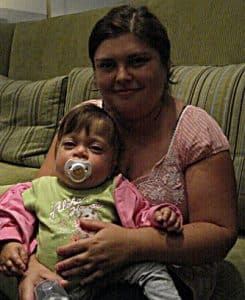
In the first place I want to thank ISMRD for what they have done for us. I am very very grateful for the help you gave us to attend the ISMRD conference.
The conference means a lot for us. It was a great opportunity to learn more about my daughter’s disease and about how to manage her health. Dr.Cathey and her team are the most wonderful doctors that I have ever met. They are very good specialists and they teach me so many things. Dr. Leroy was great, a great name of the medical world. With their help I started to know better my daughter’s disease and I am feeling better prepared in fighting with ML2.
I have trust that someday these great doctors will find a cure for this destructive disease.
I have met so many wonderful people and families there and made so many connections and life long friendships. Now I know that I am no longer alone and that there are great people around me, even if we are so far apart. Thank you so much ISMRD for your very generous support in getting us to Charleston.
It was beautiful there in South Carolina and I am very glad that I could attend to this conference.
Isolation Broken (by Birthe and Truls Roll Mucolipidosis III Parents – Norway)
 It is not easy to describe the impressions and the feelings we are left with having participated in our first ISMRD conference. As many of you already know, it is all pretty new to us, as Pernille was diagnosed in late march this year. We are still getting used to the idea and the fact that Pernille’s future will be different, challenging, and also painful and hard for her.
It is not easy to describe the impressions and the feelings we are left with having participated in our first ISMRD conference. As many of you already know, it is all pretty new to us, as Pernille was diagnosed in late march this year. We are still getting used to the idea and the fact that Pernille’s future will be different, challenging, and also painful and hard for her.
Since there are no other people with ML III diagnosed in Norway or Scandinavia – that we know of, the knowledge in this field in the healthcare system and among doctors here is very poor. We all had to go online and read as much as we could find. As a family we were very unsure of what we would hear and see as we began our long journey to Charleston this summer.
After coming home again and processing all of our information and impressions, we are left with a greater understanding about this disease. We learned so much about ML some of it good and some of it not so good. We now have knowledge and understand more about what is happening in Pernille’s body. We know that her development will be slow and understand the future challenges she and we together will face. Although each child with this disease is unique and the disease may and often does proceed differently from person to person, there are a lot of things we see in common.
With the knowledge we now have, we can inform our doctors here at home about what will happen and what areas they need to follow carefully. This will help her future. Besides the knowledge and ability to meet with the premier experts in this area we also established good friendships with other affected children and their families which we truly appreciate. Being able to talk with others who have been in this position longer than us and who can provide advice and support is just overwhelming and fantastic. We would again like to thank Jenny Noble for inviting us to this conference to meet the rest of the ISMRD family and to thank everyone for welcoming us in. We hope to keep in touch through email and facebook. We will see you all again at the next conference!
With Love, Birthe and Truls Rolls
First conference of this kind for me (by Julia Taravella Aspartylglucosaminuria Parent USA)
I got my kid’s diagnosis a month before the conference and was pretty devastated. The conference was very beneficial for us to understand the disease and to connect with other families.
It was great to meet and talk to doctors, exchange experiences with families and discuss option and hopes for rare disease treatments and cures. The conference was very well organized, the location was great, and overall it was a great success.
Unfortunately there are not many resources available for rare diseases. This was the main contributing factor in my struggle to get the children’s diagnosis that lasted over 15 years. Conferences, natural history clinics, interactions with medical professionals will all help future families identify and deal with these diseases.
It was very good to see people from different countries that visited the conference. It is only working and collaborating together will we be able to find a cure. There are several similar organizations around the world putting together conferences for Lysosomal storage disorders, all of them presenting highly valuable information. Three of them were organized within one month. That would be my suggestion for the future is to co-ordinate conferences in the different parts of the world and spread them apart in time.
Julia Travella
Loneliness broken by ISMRD family (by Smith Lambert, Sialidosis affected adult)
To the ISMRD family,
There are no words to depict, distinguish, draw, identify, or even describe the help that ISMRD facilitated for me. You have no idea the place of loneliness I felt with this disease. And no, I am not talking self-loneliness because I feel loved by family, friends, and especially my wife everyday. However, to know that you had the mobility to do whatever you pleased and for it to be vanished from you without knowing why or the reason, it is sadly heartbreaking. What was even more heartbreaking, not only did people not know of the disease in my circle of doctors but they didn’t care to do much about it.
I actually started losing hope and started accepting the fate I would face in the upcoming years. Even if that meant me being disabled from head to toe, losing my vision, or even worse. I was starting to accept my fate and accept what God would present me in life. I hate comparing diseases cause none are the same. But if I can make a comparison some days and some nights I felt like I had stage four cancer and was just waiting the the day. I had really reached that point.
However, ISMRD made me feel like I had HOPE. ISMRD made me feel not alone anymore. ISMRD made me feel I had another family, and with that, I honor that with great gratitude. And with that great gratitude, I am taking a new approach. I will fight this disease to the bitter end. I will not let it defeat me, destroy me, or put me down. I will now only rise to the occasion knowing I am truly blessed. More importantly, I feel like I need to fight this disease for all the other families suffering from this rare disease. I think it all starts with one person and I feel like now, why cant that one person be me.
ISMRD you are truly a blessing and you have no idea how much. From the ISMRD board, researchers, doctors, and the families suffering – YOU ARE INCREDIBLE. I BOW DOWN AND APPLAUD YOU FOR EVERYTHING YOU HAVE DONE!
Smith Lambertson – Sialidosis affected adult.